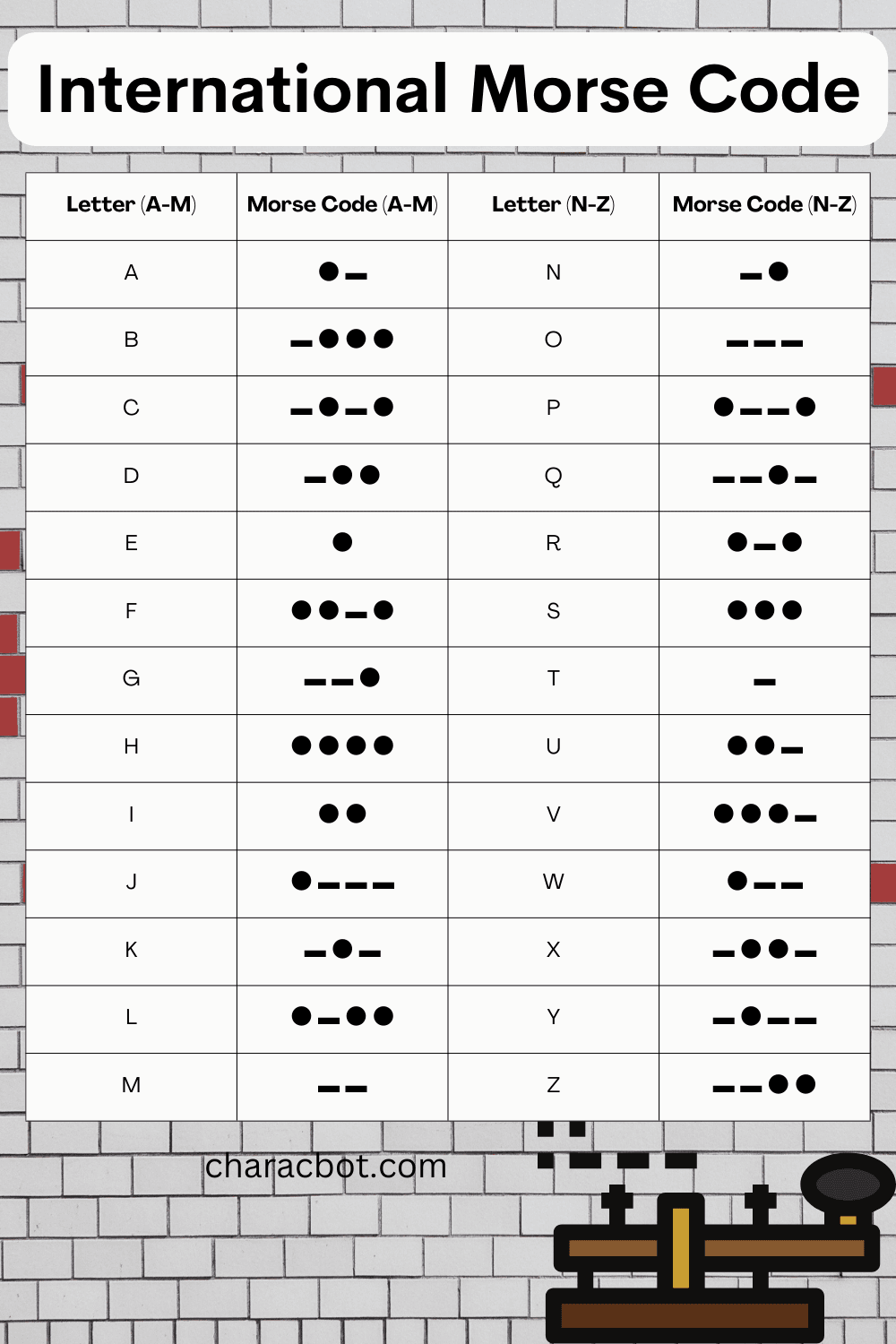Welcome to our Morse Code Translator! This tool makes it super easy for anyone to translate text into Morse code and vice versa. Whether you're curious about how Morse code works or just want to have some fun with a secret message, this translator has you covered. Plus, you can even play the Morse code audio to hear what your messages sound like, making the experience even more immersive and enjoyable. Let’s dive in and learn all about the fascinating world of Morse code!
Also, check out our Binary code translator.
Understanding the Morse Code Alphabet
The Morse code alphabet is made up of dots (.) and dashes (-). Each letter, number, or punctuation mark is represented by a unique combination of these symbols. The idea is simple but incredibly effective: a dot is a short signal, while a dash is a longer one. Together, they can represent every letter of the alphabet, all the numbers, and even some punctuation marks. For instance, the letter 'A' is represented by “.-”, and the number '1' is represented by “.----”. The simplicity of the code makes it adaptable and easy to learn, and it’s been used for decades as a reliable form of communication.

How Morse Code Translators Work
Morse code translators are tools that help convert plain text into Morse code, or Morse code back into text. They can be software-based, like the web tool we've built, or even physical devices. The basic idea is to map each character to its Morse code equivalent, following the set rules of dots and dashes. With our tool, you simply type in your text, and it instantly translates it for you—no complicated process required. Whether you’re translating “Hello” into “.... . .-.. .-.. ---” or the other way around, the process is seamless and user-friendly.
Practical Applications of Morse Code Today
Morse code may not be as widely used as it once was, but it still has some very practical applications today:
- Amateur Radio (Ham Radio): Morse code is still popular among amateur radio enthusiasts, especially during emergencies when other communication methods might fail.
- Emergency Situations: It can be a lifesaver when you need to send a message without conventional equipment, such as using light signals or tapping sounds.
- Education: Learning Morse code can help improve listening skills, memory, and understanding of historical communication methods.
- Pop Culture: Morse code often appears in movies, TV shows, and video games, keeping it relevant and fun for younger audiences.
Learning Morse Code: Tips and Resources
Here are some useful tips and resources to help you learn Morse code effectively:
- Start with Common Letters: Begin by focusing on the most frequently used letters, such as 'E' (.) and 'T' (-), to build confidence.
- Use Flashcards: Create flashcards with Morse symbols and practice until you can recognize them quickly.
- Practice with Apps: There are many mobile apps and online platforms available to help you learn Morse code through interactive games and exercises.
- Join a Community: Connect with Morse code enthusiasts in forums or social media groups to exchange tips and stay motivated.
- Listen and Tap Out Messages: Practice regularly by listening to Morse code and tapping out messages yourself—repetition is key to mastery.
Conclusion
Morse code may be old, but it’s definitely not outdated. From emergency communication to just having fun learning a new skill, Morse code has a timeless appeal. We hope our Morse Code Translator has helped spark your interest in this unique language of dots and dashes. Why not take some time to explore, practice, and see what messages you can create? It’s a fun and rewarding journey, and you never know—you might find yourself using it more often than you think!
